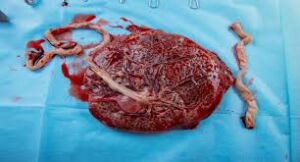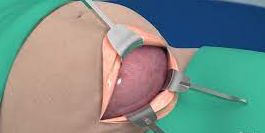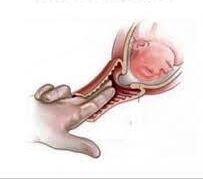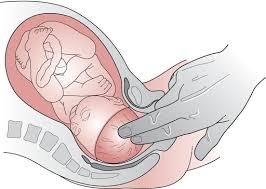Intrapartum Care Practices: Pain Management, Monitoring, and Delivery Techniques
Intrapartum is a term used to refer to the process of childbirth, which occurs during labor and delivery. During intrapartum, the uterus contracts and opens up to allow the baby to pass through the birth canal. This process can last anywhere from a few hours to several days depending on factors such as the mother’s health, stage of labor, and type of birth. During intrapartum, mothers may experience intense contractions that become longer and stronger as labor progresses, as well as sensations like nausea, lower back pain, increased heart rate, sweating and shaking. Additionally, mothers may need assistance with breathing techniques or medical interventions such as epidurals or forceps in order to manage pain and facilitate delivery. Through this complex but natural process of intrapartum, babies are born into the world safely and healthily every day!
Our MOST COMMON Topics
1ST STAGE OF LABOR

The first stage of labor is the time where contractions start, and the cervix begins to thin and dilate. Also referred to as the latent phase, this stage is divided into two parts: early labor and active labor. Early labor typically lasts from 30 minutes to several hours, depending on the woman’s health history, physical condition, and whether it’s her first delivery or not. During this time, contractions become more frequent and intense as the body prepares for birth. As the cervix begins to open up wider, active labor starts. During this time, contractions will grow even stronger in intensity and frequency until the baby is ready to be born. At the end of active labor, a mother can expect full dilation (10 cm) of her cervix prior to delivery. Click to find out more.
2ND STAGE OF LABOR

The second stage of labor is the active pushing phase. This is when a woman begins to push with each contraction to help the baby move down and out of the birth canal. It typically lasts anywhere from 30 minutes to two hours, depending on the individual mother’s experience and the position of the baby in relation to the pelvis. During this stage, hormones like oxytocin are released which stimulate uterine contractions. This can cause intense pressure, cramping, and pain, so many women find that it helps to focus on pushing with deep breaths as well as various birthing positions that open up the pelvis. Ultimately, this stage ends when the baby is delivered through vaginal birth or by cesarean section. Click to find out more.
3RD STAGE OF LABOR

The third stage of labor is a crucial stage in the birthing process and is characterized by the birth of the placenta, or afterbirth. During this stage, the mother’s uterus continues to contract, pushing out the placenta, which usually takes around 5-15 minutes. The mother also experiences a sensation of bearing down as with the baby during second stage; however, this can be quite different as it’s not just the pushing of a single body – rather it’s the pushing out of an organ that has been connected to her body for so many months. During this stage, doctors often check to make sure that all components of the placenta have been expelled. As soon as complete expulsion of the placenta has occurred and been confirmed by medical staff, uterine contractions will cease and bleeding will begin to slow down. It is from here that care providers can assess if any further treatments are necessary going forward. Click to find out more.
4TH STAGE OF LABOR

The fourth stage of labor is the post-partum period. This is a critical time for the mother and her newborn. This stage involves delivery of the placenta, assessment of bleeding, and closure of any lacerations that may have occurred during childbirth. It is also important for monitoring vital signs such as blood pressure, heart rate, and temperature. During this time, providers will also assess the baby’s condition by performing tests such as Apgar scoring to check for proper breathing and circulation. The mother should also be monitored closely for signs of post-partum hemorrhage or infection. Appropriate treatment or management plans should be established with both the mother and baby in mind to ensure health and safety during the post-partum period. Click to find out more.
AUGMENTATION OF LABOR

Augmentation of labor occurs when there are difficulties with progress during natural labor or when conditions warrant that progression be sped up due to potential risk factors present in mother or baby. During augmentation, medical staff can provide drugs to stimulate uterine contractions, break an unripe cervix, or adjust the fetal position in order to help facilitate a successful vaginal birth. Augmentation of labor can significantly reduce complications for both mother and baby but must be carefully monitored throughout its duration in order to avoid overstimulation and ensure maximal safety for both parties involved in delivery. Click to find out more.
CAESARIAN BIRTH

A C-section, or Cesarean section, is a type of childbirth procedure in which an incision is made through the mother’s abdomen and uterus in order to deliver the baby. It is typically considered to be a last-resort option, as it carries a higher risk of complications than natural vaginal birth. However, in some cases it may be necessary due to potential risks to either the mother or baby, such as preeclampsia or umbilical cord prolapse. C-section can be performed before labor begins (scheduled cesarean) or during labor (emergency cesarean). During the procedure, an anesthesiologist will administer anesthesia to numb the area before making the incisions and delivering the baby. After delivery, the incisions are closed with stitches or staples. Postpartum care for cesarean birth typically involves more rest and self-care for several weeks as recovery from surgery takes longer than for vaginal birth. Click to find out more.
INDUCTION OF LABOR

Induction of labor is the process by which a woman’s body is prepared for childbirth. With induction of labor, labor is initiated using non-natural efforts. During induction, a physician will use medications or other methods to cause the body to go into labor. The purpose of labor induction is to start labor before it would begin naturally. In some cases, such as when a mother’s health or that of her baby is at risk, inducing labor may be necessary. Click to find out more.
LA MAZ

La Maz is an ancient Mesoamerican ritual practiced by the indigenous people of Mexico for centuries. It is a spiritual ceremony involving fasting and prayer, which are used to bring about harmony between the physical world and the spiritual world. The ritual involves offerings of food, music, flowers, incense, and other items to honor the gods or ancestors. Participants often wear special clothing and paint their faces with symbols that represent different gods or energies. During the ritual, they may also engage in cleansing activities such as smoking copal or sprinkling water around themselves. La Maz provides individuals with an opportunity to connect with their ancestors and create unity in their community. Additionally, it helps them reconnect with nature and gain insight into Maya cosmology. Click to find out more.
PRETERM BIRTH

Premature or preterm labor is a condition in which labor begins before the end of the 37th week of pregnancy. It is one of the most common and serious complications associated with childbirth and can have devastating consequences for both mother and baby. Preterm labor is a leading cause of newborn death and can result in long-term developmental delays, breathing difficulties, vision problems, brain abnormalities, cerebral palsy, hearing impairments and other lifelong disabilities. In addition to its physical effects, preterm labor can also take an emotional toll on families as they grapple with their new normal. Although there are treatments available to help manage preterm labor, research suggests that preventing it from happening in the first place is the most effective form of treatment. This involves regular monitoring throughout pregnancy to identify any risk factors that could lead to preterm labor such as high blood pressure or smoking during pregnancy. Other preventative measures include maintaining a healthy lifestyle and seeking medical care if any signs or symptoms arise during pregnancy. Click to find out more.
VBAC

VBAC, or Vaginal Birth After Cesarean, is an increasingly popular option for pregnant women who have previously had a cesarean section. As the name suggests, VBAC involves the delivery of a baby vaginally after a prior cesarean section. While VBACs can be successful, they also present certain risks and should be discussed with your healthcare provider. This section will provide an overview of VBAC, including its risks and benefits, as well as discuss how to best prepare for and navigate a VBAC. Click to find out more.
WHAT TO EXPECT IN THE LABOR AND DELIVERY ROOM

Welcome to the Labor Room! We provide a safe and comfortable environment for women to give birth and for medical professionals to care for them during labor and delivery. Our experienced staff is dedicated to providing the highest quality of care and support, ensuring that both mother and baby have a healthy and positive birth experience. With a relaxed atmosphere and modern amenities, we strive to make the labor and delivery process as stress-free as possible. Click to find out more.

